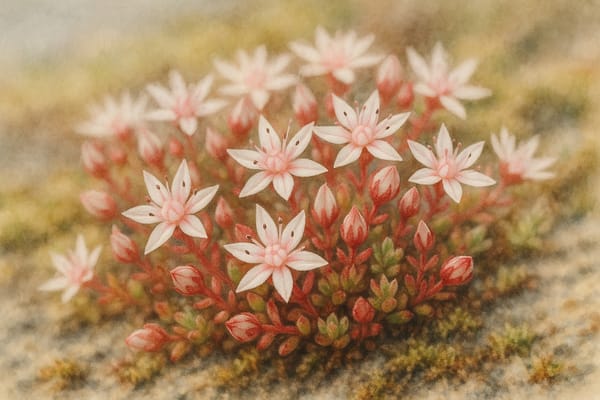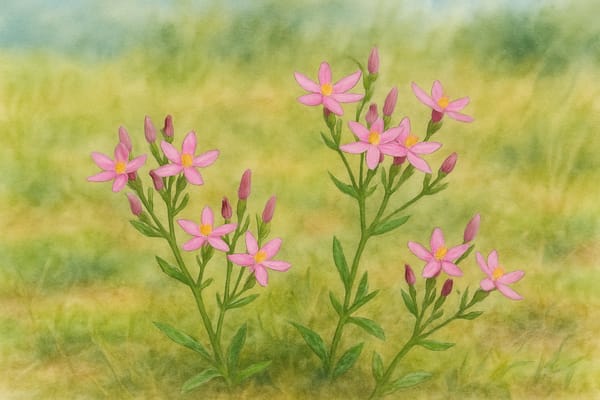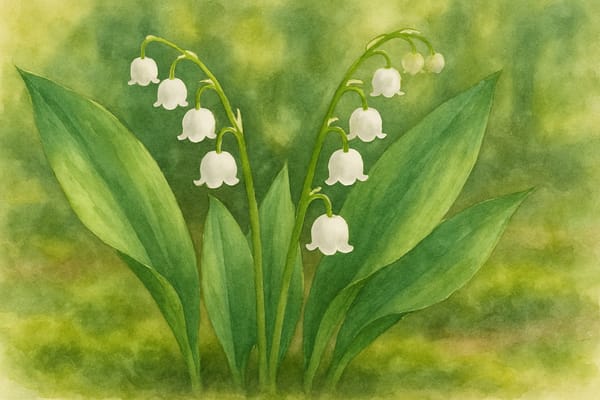Tucked into Cornish hedgerows, trailing down stone walls, and spreading like a delicate mosaic across coastal outcrops, English Stonecrop is one of Cornwall’s most enduring native succulents. With its star-shaped flowers and ability to thrive in the most unforgiving terrain, this tiny plant is both a visual delight and a cultural echo of the region’s ancient past.
A Plant Rooted in Stone and Story
Native to Britain’s western coasts, English Stonecrop has long played a quiet yet enduring role in the cultural and ecological landscapes of Cornwall. Though not steeped in folklore to the extent of other plants, its connection to Cornwall’s ancient sites is striking.
Stonecrop colonises the very stones at the heart of Cornish myth — from Bronze Age circles to serpentine cliffs — creating a living link between nature and legend. Its ability to survive on sacred ground, where people once gathered, danced, and told stories, gives it a quiet spiritual resonance. In this way, it has become a symbol of endurance, natural transformation, and the quiet persistence of life across centuries.
Historically, English Stonecrop was also used in traditional living roofs on stone cottages and barns, appreciated for its drought resistance and soil-binding properties. Today, it still features in green roofing and naturalistic designs — bridging ancient practicality with modern ecological thinking.
Best Conditions for Coastal Gardens
A perfect match for Cornwall’s exposed and stony soils, English Stonecrop requires very little to thrive.
Ideal Conditions:
| Factor | Best Practice |
|---|
| Sunlight | Full sun preferred; tolerates light shade |
| Soil | Well-drained, sandy, gritty, or rocky |
| Moisture | Low; drought-tolerant once established |
| Exposure | Thrives in salty winds and coastal conditions |
| Hardiness | Evergreen perennial; very hardy |
Growing Tips:
- Site it well: Ideal for rockeries, gravel beds, container displays, green roofs, or trailing from dry stone walls and hedges.
- Let it dry out: Water sparingly — overwatering or rich soils will spoil its natural form.
- Propagate easily: Cuttings root readily with minimal effort. Scatter them across gritty soil or stonework for natural spread.
- Resist feeding: Avoid fertiliser, which encourages weak, leggy growth.
- Trim if needed: Light trimming after flowering can keep mats neat and reduce self-seeding.
English Stonecrop offers a tidy, architectural groundcover with almost no maintenance — ideal for spaces where traditional plants may fail, and perfect for Cornish gardens aiming to reflect the local character of place and stone.
Ecological and Mythic Resonance
English Stonecrop doesn’t just cling to stones — it tells a story with them. Growing across ancient sites like The Hurlers or Boscawen-Un, it becomes part of Cornwall’s living mythos. Local legends of petrified people and enchanted stones gain extra symbolism when this resilient plant blooms among them — a botanical echo of endurance, healing, and quiet transformation.
It also plays a practical ecological role — binding soil on rocky slopes, providing pollen for insects, and sheltering microfauna. In this sense, it helps protect the very stones it grows on, acting as a quiet guardian of Cornwall’s natural and cultural heritage.











